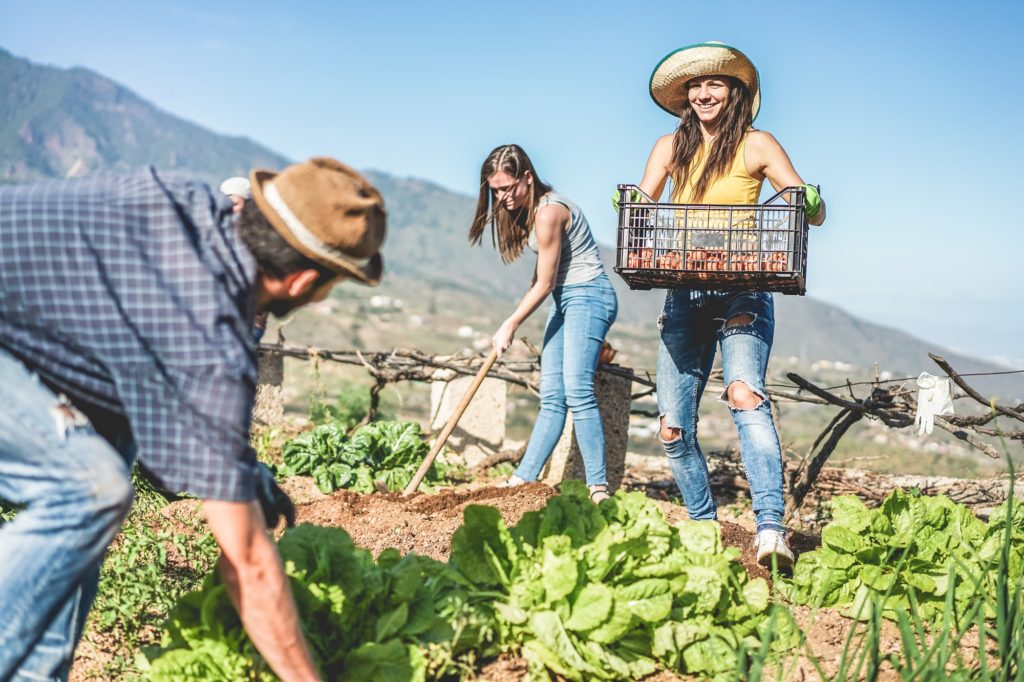I have written about community-supported agriculture (CSAs) before and so haveprevious writers at LocalHarvest. CSA farming is truly at the core of what LocalHarvest does connecting consumers with farmers in a mutual relationship of reciprocity. But times are changing. Consumers have an ever broadening expanse of options to locate and purchase food- with the click of a button, pre-chopped, pre-cooked, delivered by bike, donkey (just kidding- seeing if you are reading), or soon by drones or driverless cars to their door.
Mainstay marketing outlets that have developed in the last 30 years for small and locally-oriented farmers, such as farmers markets and CSAs, have seen a nationwide decline in business in the last few years. There is a suite of probable factors, including the rise in online grocery sales, meal kit services, and more and more people eating out or getting by on snacks instead of actually cooking. I think a large part of it has to do with what I call the “Amazonification” of the food system. I used to call it the “Walmartification”, but I now realize that brick and mortar stores are a less significant driver moving into the future. What are the definitions of these invented words? In essence, they are a concerted effort by behemoth global businesses to convince people to take their food for granted, to be fickle about everything, and to maintain no loyalty to anything other than having diverse choices at the lowest possible prices. The cheapest ingredients can flow in from wherever they want in the world and get to the consumer quickly. It is fast food on an immense scale under the illusion of ‘meeting consumer needs’. Add in a dash of feel good signage, word plays like “locally grown”, pictures of unnamed farmers or their rough hands delicately cradling a strawberry, and you get a completely duped consumer who is further and further divorced from where food is grown while the negative externalities are felt elsewhere.
Memories become more distant of the days when kids grew up on farms or helped their grandparents on their farms. Or days when a whole family would go out and pick cherries together, and then pit and freeze them later. Or days when parents would load up their kids into a red wagon and take them to the farmers market for a couple hours of shopping and social connection. Or picking up the wooden crate of fresh weekly vegetables on the CSA farm that you have invested in while chatting with neighbors how to use rutabaga. We are moving more inward, ego-driven (it’s all about the “I”),disconnected from the land, the people growing the food, and each other. And the more we do that, the more walled off we feel, the more socially isolated, the more depressed, the worse we eat, and on and on with our list of cultural ailments that befall our “advanced” society. The number of minutes we spend on cooking is inversely proportional to the minutes we spend on our devices, to nobody’s benefit.

Fickle, unfaithful, convenience-seeking consumerism is described by Wendell Berry so eloquently here: “In this state of total consumerism – which is to say a state of helpless dependence on things and services and ideas and motives that we have forgotten how to provide ourselves – all meaningful contact between ourselves and the earth is broken. We do not understand the earth in terms either of what it offers us or of what it requires of us, and I think it is the rule that people inevitably destroy what they do not understand.” (pg. 85, The Art of the Commonplace: The Agrarian Essays of Wendell Berry). Can we ground the rootless in something that gives them a sense of place, that helps them establish roots in an ever faster paced world? Can being connected to a farm, a place, the soil, the people, provide that solace and sense?
Will farmers and small-scale food sellers be able to adapt to these new ways of buying and eating food without running themselves ragged, extinguishing their profit margins, or lowering their environmental values by using more plastic packaging or fossil fuels? Traditional marketing methods of farmers markets, farmstands, and CSAs will continue to be incredibly important and I don’t begrudge any farmers who stay on that course and creatively make it work for them. But I don’t believe that resisting change will get us anywhere. The tide is too strong- adapt or perish. Just do it with your values intact.
In part 2 of this series, I will share some promising models that farmers and groups of producers are using to not only compete but to thrive by adapting to new food marketing trends. They are building customer loyalty in new ways and gracefully adapting to the fickle ways of the consumer, while grounding them in something that is meaningful, transparent, and produces tasty food.
kindly,
-Rebecca Thistlethwaite
Reprinted with permission from author, Rebecca Thistelthwaite, and LocalHarvest.
Images from iStock/julief514 (main), DisobeyArt (post).


